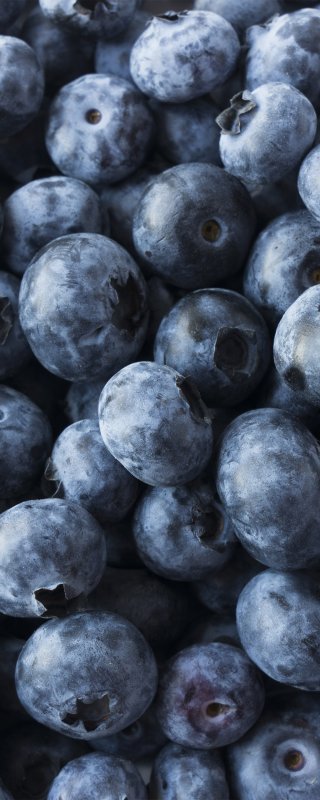
Blueberry
Postharvest management of blueberries knows many aspects. Please select the page of your interest below. For blueberries, we have gathered information about the international supply chain of the blueberry. Next, we focus on the detailed steps along the supply chain. We start with discussing the harvest practices for blueberries. We continue with proper packhouse practices and transport practices. The last step in the supply chain is the retail. Also the needed retail practices for blueberries are described. The last two blueberry pages deal with blueberry quality and frequently occurring disorders and diseases. If you need direct consultation on proper postharvest management of blueberries, please contact our expert through the contact form below.
Postharvest points of attention for blueberry
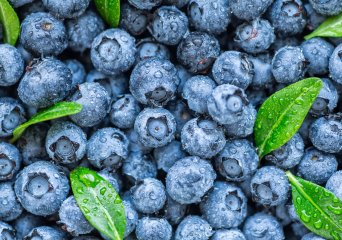
The blueberry supply chain
Best practices in each step of the fresh supply chain have a great influence on the postharvest quality and shelf-life of blueberries. By using appropriate harvest processes and supply chain conditions, blueberry quality can be maintained longer and shelf life can be extended. Failure to follow these processes may result in a higher degree of loss or deterioration of the blueberries to a lower quality class. Every step in the chain is important for success later in the chain.
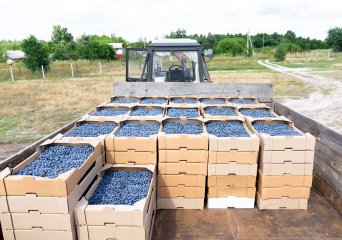
Harvest practices for blueberries
Proper harvest of blueberries is essential for a successful supply chain. The performance of the harvesters is critical to delivering a good quality product. First of all, picking at the right maturity is important to develop a satisfactory final eating quality. Not only the harvest, but also further handling, such as grading, sorting and packaging, must be done carefully to avoid bruising and other damage to the product. The use of clean and suitable materials at all time from the harvest to the consumers contribute greatly to minimal losses.

Packhouse practices for blueberries
The processing of blueberries at the packhouse facility must be well regulated and controlled. In any case, blueberries must be subjected to (forced air) cooling as soon as possible. Rapid removal of field heat is essential for blueberries, so a location with a cooling facility should be near the production fields. The activities in the packhouse contribute in large extend to the final product quality. It is therefore of utmost importance to have a careful handling in the packhouse and at the same time an effective berry sorting to deliver a high quality product

Transport practices for blueberries
The transport of fresh products like blueberries generally takes place in (refrigerated) trucks, reefer containers or by plane. Checks and proper loading are always important to maintain good (temperature) conditions for the product during transport. For fresh products, refrigerated transport is often necessary. Trucks and reefers can maintain a low temperature, but do not have enough cooling capacity to lower the product temperature. Therefore, products must be pre-cooled before entering the refrigerated truck or reefer. During transport and waiting periods, the load must be well covered to protect against dust, sun and rain. Careful driving and careful product handling is essential to prevent damage to products due to mechanical action.
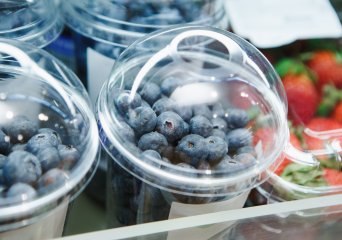
Retail practices for blueberries
Improved retail practices can lead to maintaining a high quality of blueberries and improve customer satisfaction. For the highest freshness on the shelf and to minimize waste, 'first-in first-out' management may be the best strategy. However, quality inspections may lead to other decisions. The staff must be well trained in handling the different types of fresh produce. They must realize that fresh products are very susceptible to handling damage and to unfavourable conditions such as improper temperature and relative humidity.
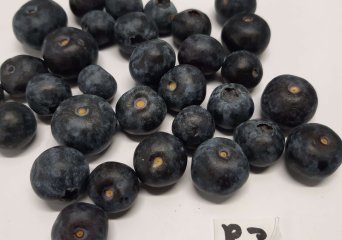
Blueberry quality
Quality of blueberries is determined by several characteristics that give joy to the consumer. Important characteristics of quality are appearance, colour, texture and flavour. Appearance and colour are examples of external quality parameters. Texture and flavour are examples of internal quality. The quality characteristics are influenced by variety, pre-harvest factors, harvest practices and postharvest handling. Determination of fruit quality provides an important indication of the remaining storage potential and shelf-life.
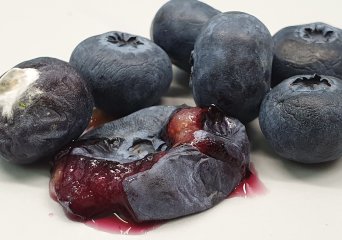
Blueberry disorders and diseases
Customers are willing to purchase healthy fruits, meaning fruits free of diseases, and disorders. Furthermore, blueberries must not only look appetizing from the outside, but also be fresh inside. There are dozens of different diseases and disorders, which are not always easy to recognize. A good diagnosis is important. By recognizing the symptoms of a disease or disorder, it can be linked to the cause. After which, measures can be taken to prevent the disease or disorder from happening again in the future.

Research insights for postharvest management of blueberries
In our applied research, we study postharvest management of many fresh products. On this page, some results from our research relevant for blueberries are listed.